SOME AMAZING THINGS ABOUT A PEACOCK 🦚 SOME PEOPLE NEVER KNEW
🦚SOME AMAZING THINGS ABOUT A PEACOCK 🦚 SOME PEOPLE NEVER KNEW.

🦚10 FEATHERY FACTS ABOUT PEACOCKS 🦚
With its massive tail and iridescent colors, this bird has long fascinated its human observers—and we’re still learning its secrets. For example, a study recently published in The British Journal of Animal Behaviour says that when a peacock fans its ornamented train for the ladies during mating season, its feathers quiver, emitting a low-frequency sound inaudible to human ears. Depending on whether they want to attract females from far away or up close, they can change the sound by shaking different parts of their feathers. (They’re not the only animals that create infrasonic sounds. Elephants produce them with their vocal cords, most likely to communicate over long distances.) Here are a few other interesting facts about these impressive birds.
- ONLY THE MALES ARE ACTUALLY “PEACOCKS.”
The collective term for these birds is “peafowl.” The males are “peacocks” and the females are “peahens.” The babies are called “peachicks.”
- A FAMILY OF PEAFOWL IS CALLED A “BEVY.”
A group of the birds is also sometimes called an “ostentation,” a “muster,” or even a “party.”
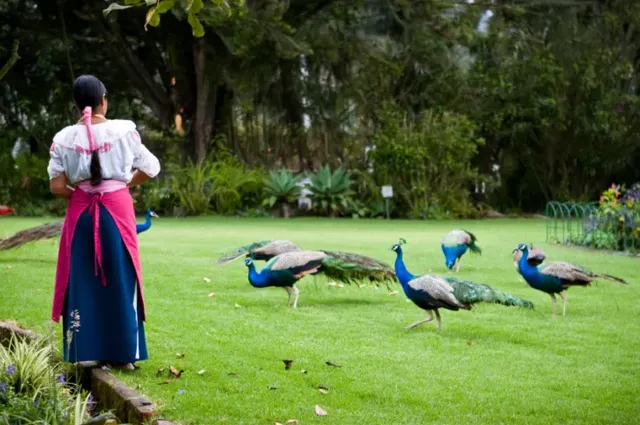
- THEY’RE NOT BORN WITH THEIR FANCY TAIL FEATHERS.
The male peachicks don’t start growing their showy trains until about age three. In fact, it’s hard to tell the sex of a peachick because they’re nearly identical to their mothers. At around six months, the males will begin to change color
- THEY DON’T HAVE TO BE KILLED FOR THEIR FEATHERS.
Luckily, the peacocks shed their train every year after mating season, so the feathers can be gathered and sold without the birds coming to any harm. The average lifespan of a peacock in the wild is about 20 years.
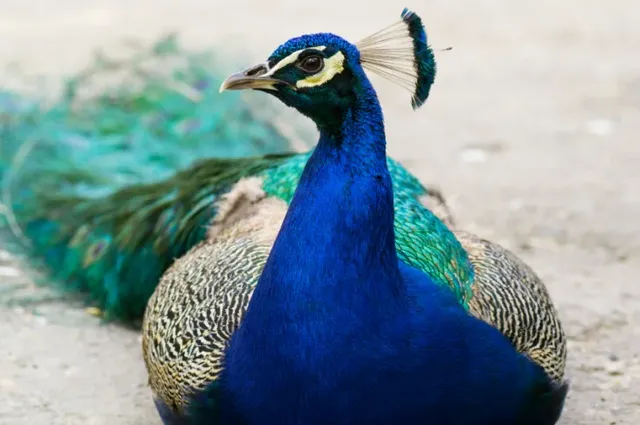
- THEY CAN FLY, DESPITE THEIR MASSIVE TRAINS.
A peacock’s tail feathers can reach up to six feet long and make up about 60 percent of its body length. Despite these odd proportions, the bird flies just fine, if not very far.
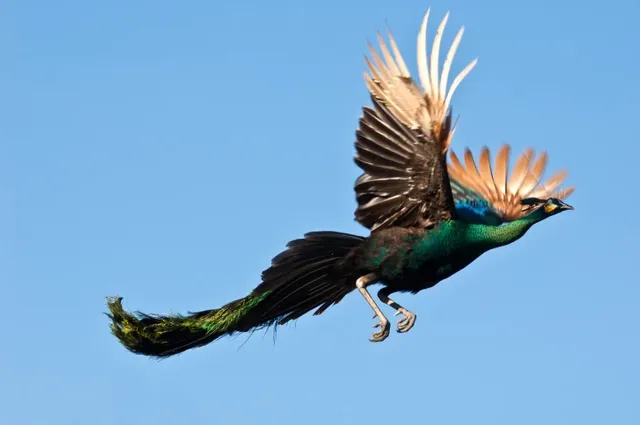
- THERE ARE ALL-WHITE PEAFOWL.
Thanks to selective breeding, it’s common for captive peafowl to buck the iridescent trend for all white feathers. This is called leucism, and it’s due to a genetic mutation that causes loss of pigmentation. These peafowl are often mistaken for being albino, but instead of having red eyes, animals with leucism retain their normal eye color.
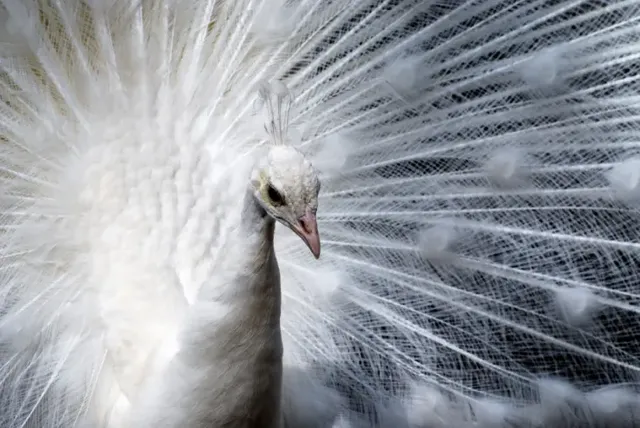
- PEACOCKS WERE A DELICACY IN MEDIEVAL TIMES.
The birds were plucked, roasted and then re-dressed in their feathers to appear in their original live state on the dinner table. Here’s the presentation instructions from one recipe:
“wynde the skyn
wit the fethurs and the taile abought
the body, And serue him forthe as he
were a-live”
The birds may have looked beautiful, but they reportedly tasted terrible. “It was tough and coarse, and was criticized by physicians for being difficult to digest and for generating bad humors,” writes Melitta Weiss Adamson in her book Food in Medieval Times.
- THEY CAN FAKE IT.
These birds aren’t just nice to look at, they’re also clever, according to one recent study.
When peacocks mate with peahens, they give out a loud “copulatory call.” Canadian researchers Roslyn Dakin and Robert Montgomerie discovered that the birds can “fake” this call to attract more females. As the BBC’s Ella Davies put it, “By pretending they are mating when they are not, the birds could convince females they are more sexually active—and therefore genetically fitter—than their rivals.”
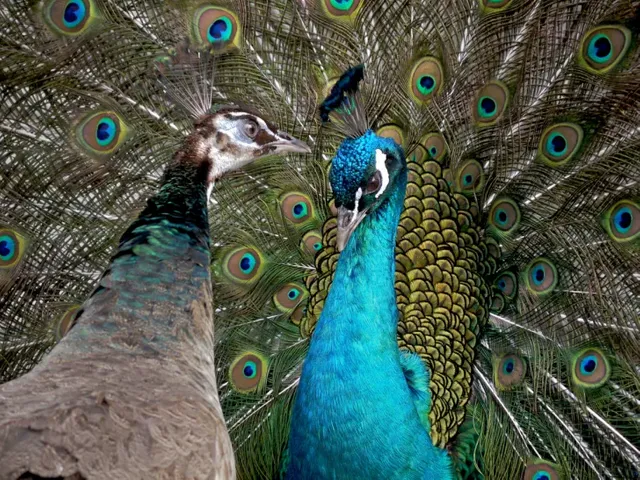
In fact, one-third of the calls heard by researchers were fake, and the birds that made them scored the most hookups. Sneaky, sneaky.
- THEIR FEATHERS ARE COVERED IN TINY CRYSTAL-LIKE STRUCTURES.
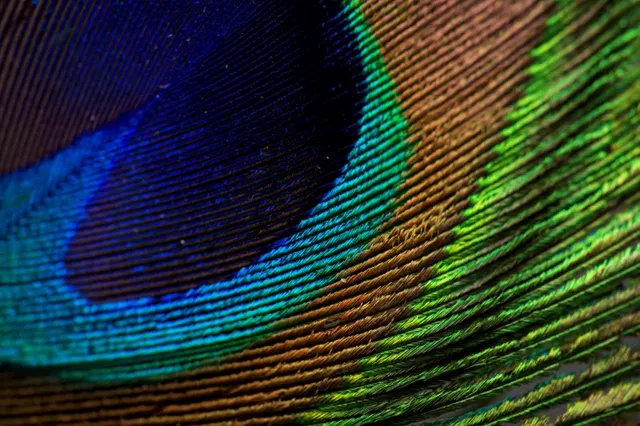
What makes the peacock’s feathers so brilliant? Microscopic “crystal-like structures” that reflect different wavelengths of light depending on how they’re spaced, resulting in bright fluorescent colors. Hummingbirds and shimmering butterflies have mastered a similar visual effect on their own wings.
- A PEACOCK'S CREST ACTS AS A SENSOR FOR MATING
A female peacock has special sensors in her crest that allow her to feel the vibrations of mate who may be located far away. According to The Atlantic, the feathers are "tuned to vibrate at the exact same frequencies at which a displaying peacock rattles his tail." Whenever a male peacock fans his tail, he shakes it at a rate of 26 times a second, creating a pressure-wave that literally rattles the female's head for attention.
Thanks for reading I am @yakon20
Special regards to
@booming
@focusone
@steemcurator01
@steemcurator02
@steemcurator03
#Animals #Birds
#fur-friends #steemexclusive
#lovepet #factsaboutapeacock
#nigeria
We found massive Plagiarism from your work. You copied from these sites:
https://feeding-peacocks.blogspot.com/
https://www.pinterest.com/pin/382102349611399953/
https://www.mentalfloss.com/article/62371/9-feathery-facts-about-peacocks#:~:text=10%20Feathery%20Facts%20About%20Peacocks
@yakon20. We strongly stand against plagiarism. You will not get support from us if you continue to copy other people's work without proper attribution. And we might decide to mute your posts in the nearest future if you do not stop it